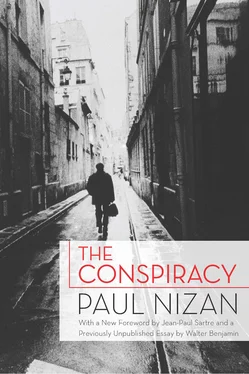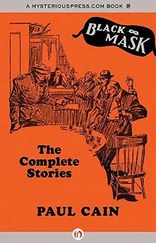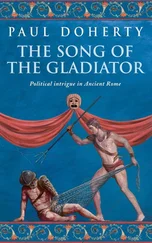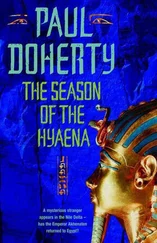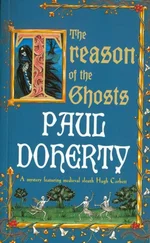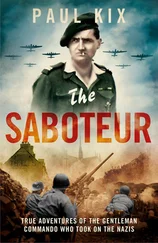Paul Nizan
The Conspiracy
PAUL NIZANwas born in Tours, France in 1905, the son of a railway engineer. A close friend of Sartre at the Lycée Henri IV and at the Ecole normale supérieure, he joined the Communist Party in the late 1920s and became one of its best-known journalists and intellectuals. His works include Aden, Arabie; Les Chiens de Garde; Antoine Bloyé ; and Le Cheval de Troie . In 1939, following the Molotov — Ribbentrop Pact, Nizan left the party and was killed the following year in the Battle of Dunkirk fighting against the German army.
In The Conspiracy, Nizan draws on cultural, political and historical sources that will often be unfamiliar to English-speaking readers, half a century after its original publication. A few explanatory notes have, therefore, been provided at the end of the book, to which readers may if they wish refer — but without burdening the text of the novel itself with any inappropriate apparatus of reference numbers.
Perhaps the most important thing to explain is something about the French system of higher education, in which a particular role is played by a group of elite Grandes Écoles in Paris, most of which go back in their present (approximate) form to the Revolutionary or Napoleonic period, and which flank the University of Paris (Sorbonne). Rosenthal and his friends attend what is still the best known of these, the Ecole normale supérieure in Rue d’Ulm. This is entered by annual competition, open to pupils from lycées (roughly equivalent to grammar or high schools) all over France. However, certain well-known Parisian lycées like the Louis-le-Grand of this book (which the author himself attended with Jean-Paul Sartre in the early twenties, and which stands next door to the Sorbonne) specialize in preparing for the Ecole Normale Supérieure entrance: pupils from less prominent lycées throughout the country transfer there at the age of eighteen for this purpose. At the Ecole Normale Supérieure, students are prepared not simply for a first degree ( licence ), but also for the more difficult agrégation, a competitive examination which qualifies successful candidates to apply for a strictly limited number of teaching posts (in history, mathematics, philosophy, etc.) in lycées — posts which carry higher salaries than those open to teachers who only have ordinary degrees.
Other Grandes Écoles figuring here include the Ecole Nationale des Chartes, for archivists and librarians; the Ecole Libre des Sciences Politiques (now the Institut d’Etudes Politiques) in Rue Saint-Guillaume; the Ecole Polytechnique (familiarly known as X), which has a military status and qualifies pupils either for technical branches of the armed services or for engineering branches of the public services, through an education specializing in mathematics and the physical sciences; and, in the domain of technical and vocational education, the Ecole Centrale des Arts et Manufactures and the Conservatoire National des Arts et Métiers.
The Conspiracy is set in the political context of France between 1924 and 1929. In 1924, the Right-dominated Horizon-Blue Chamber (so called after the colour of the French Army’s field uniform between 1915 and 1927) was replaced in general elections which led to a coalition government of the Left Cartel. Poincaré, the conservative politician most identified with France’s hard line towards defeated Germany and in particular with French occupation of the Ruhr (1923), was replaced as Premier by the Radical-Socialist Herriot, while Millerand was similarly replaced as President by Doumergue. By 1925, however, the Right held governmental power once more, with a series of ministries headed for the most part either by Briand (1925–26 and again in 1929) or Poincaré (1926–29).
I should like to express my gratitude to Christine Donougher, Marie-Thérèse Weal, and especially Madame Rirette Nizan, for their kind help when I was finalizing this translation.
Foreword: On The Conspiracy
Nizan speaks about youth. But a Marxist has too much historical sense to describe an age of life — such as Youth or Maturity — in general, just as it marches past in Strasburg Cathedral when the clock strikes midday. His young men are dated and attached to their class: like Nizan himself, they were twenty in 1929 — the heyday of ‘prosperity’ in the middle of the post-war period that has just ended. They are bourgeois, sons for the most part of that grande bourgeoisie which entertains ‘anxious doubts about its future’, of those ‘rich tradespeople who brought up their children admirably, but who had ended up respecting only the Spirit, without thinking that this ludicrous veneration for the most disinterested activities of life ruined everything, and that it was merely the mark of their commercial decadence and of a bourgeois bad conscience of which as yet they had no suspicion.’ Wayward sons, led by a deviation ‘out of the paths of commerce’ towards the careers of the ‘creators of alibis’. But in Marx there is a phenomenology of economic essences: I am thinking, above all, of his admirable analyses of commodity fetishism. In this sense, a phenomenology can be found in Nizan: in other words, a fixing and description, on the basis of social and historical data, of that essence in motion which is ‘youth’, a sham age, a fetish. This complex mixture of history and analysis constitutes the great value of his book.
Nizan lived his own youth to the dregs. When he was immersed in it and it barred his horizon on every side, he wrote in Aden, Arabie: ‘I was twenty, I won’t let anyone say those are the best years of your life.’ He felt then that youth was a natural age, like childhood, although far more unhappy, and that responsibility for its miseries should be laid at the door of capitalist society. Today he looks back on it and judges it without indulgence. It is an artificial age, which has been made and which makes itself, and whose very structure and existence depend upon society: the age of inauthenticity, par excellence. Workers at twenty, however, are protected from it by misfortunes, by worries, by the contact they must make in order to survive: they ‘already have mistresses or wives, children, a profession. . in short a life’; once they leave adolescence, they become young men, without ever having been ‘young people’. But Laforgue and Rosenthal, sons of bourgeois families, students, live that great abstract ennui to the full. Their fatal lightmindedness and their aggressive futility are due to the fact that they have no duties and are by nature irresponsible. They ‘improvise’ and nothing can engage them, not even their membership of extremist parties: ‘. . these diversions. . had no great consequences for the sons of bankers and industrialists, who could always return to the embrace of their class.. .’ Very wise perhaps, if these improvisations sprang from a brief contact with reality. But they remain in the air and their authors forget them at once. Their actions are puffs of smoke, they know this and it is what gives them the courage to undertake things — though they pretend not to be aware of it. What are we to call them, these undertakings so serious yet so frivolous, if not ‘conspiracies’? But Laforgue and Rosenthal are not Camelots du Roi: young bourgeois can come and make their plots at the other end of the political spectrum, even in the parties of grown men. We can see what that fine word ‘conspiring’ hints at in the way of whisperings, little mysteries, hollow consequence and invented dangers. Tenuous intrigues: a game.
Читать дальше
